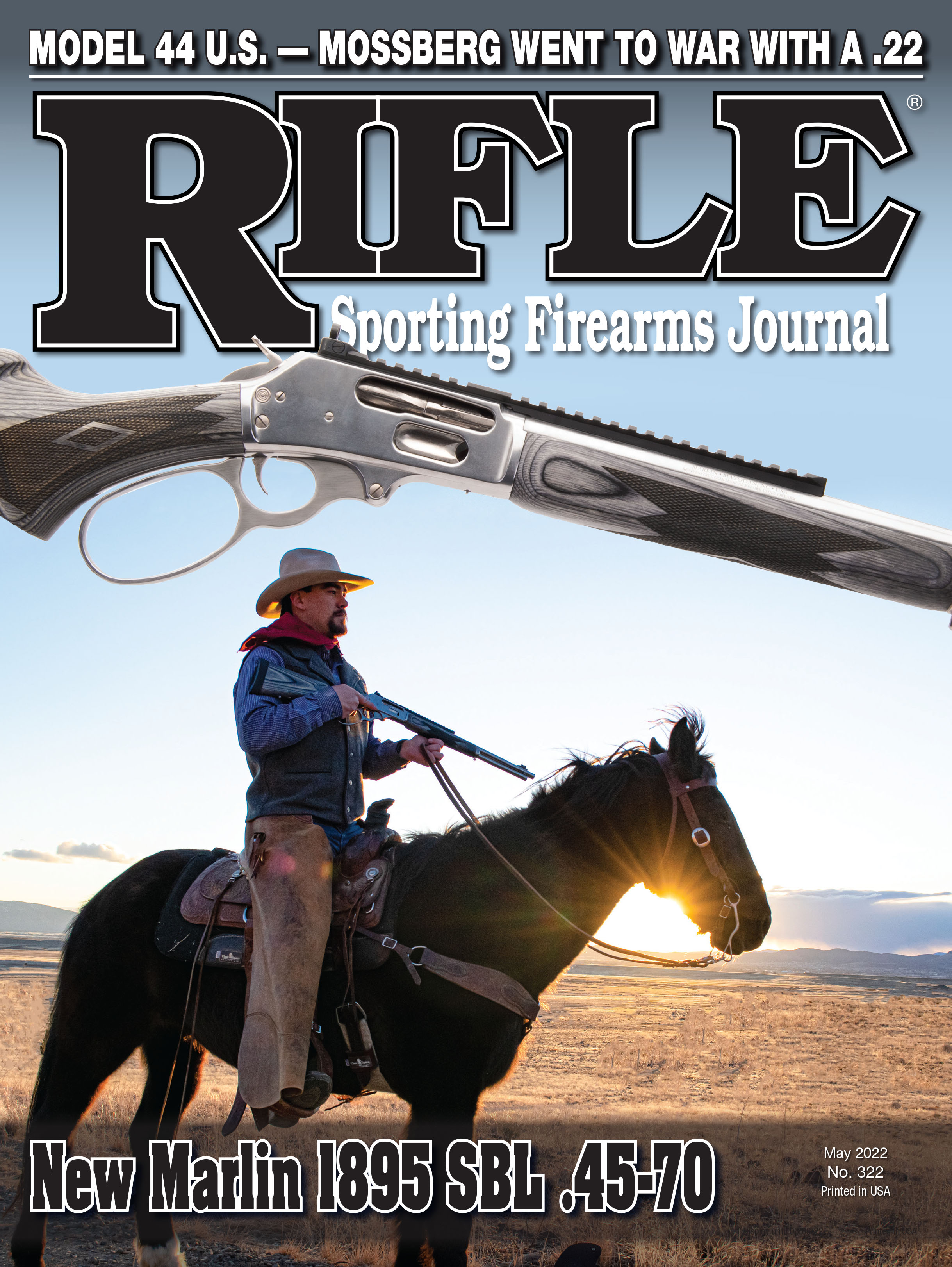New Trends in Bolt-Action Bedding
How Actions and Stocks Have Improved Accuracy
feature By: John Barsness | May, 22
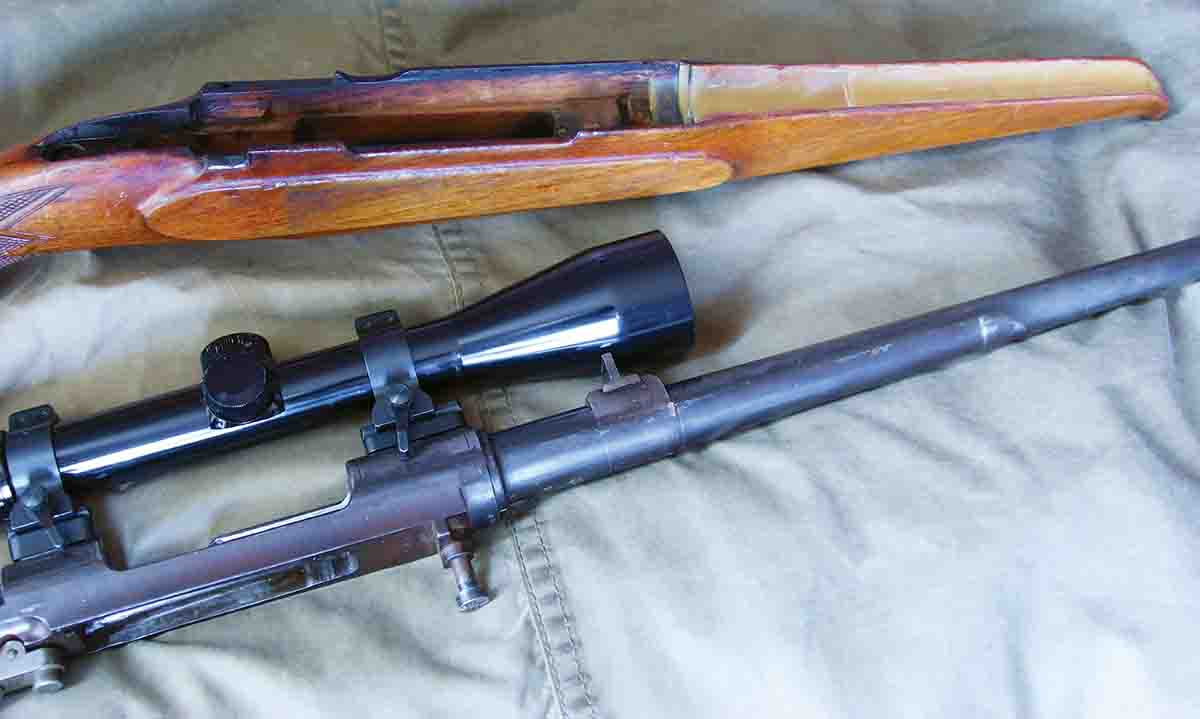
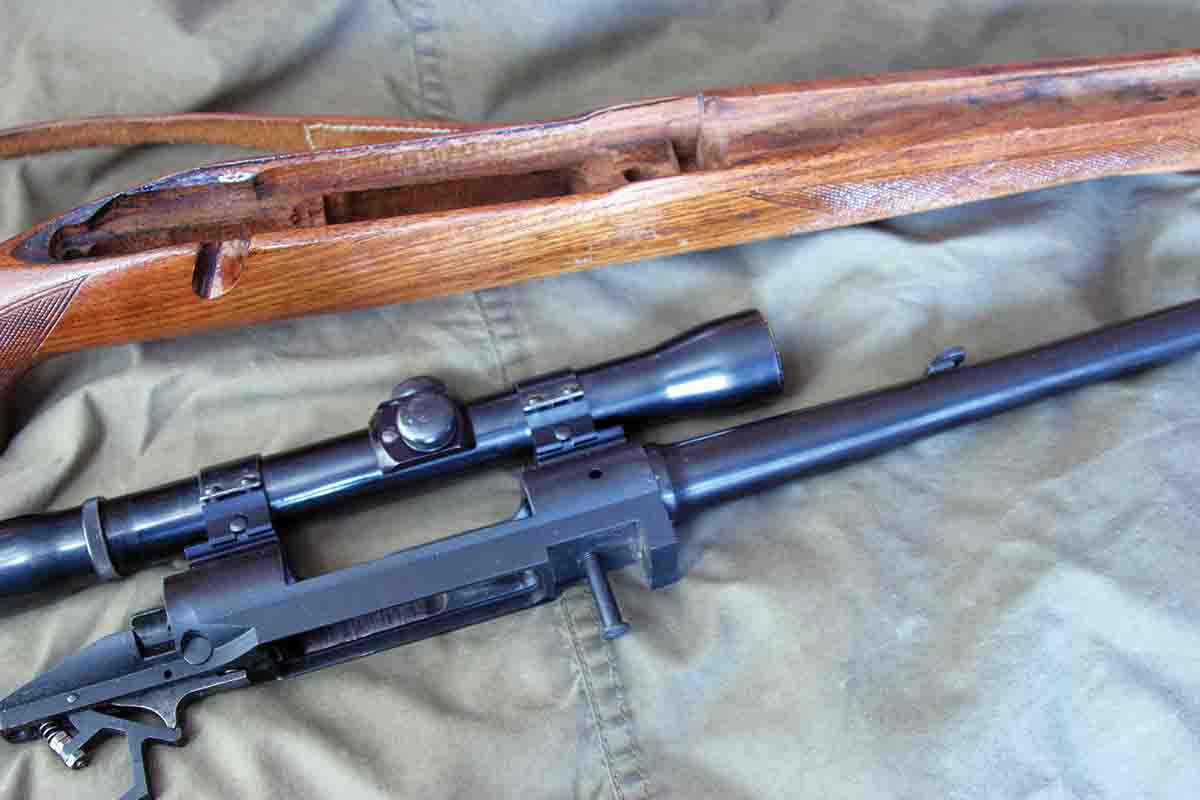
The Model 98 Mauser and 1903 Springfield actions are prime examples of this, along with several of other bolt actions designed in the late nineteenth- and early twentieth-century, including some commercial rifles. The gun writers of the day often included a critique of the stock bedding on commercial rifles, mentioning their high regard for “close” inletting of both action and barrel.
In fact, many riflemen considered tight inletting necessary for fine accuracy, and while to a certain extent this applies to the action, some shooters realized rifles tended to shoot more accurately with the barrel “floated” enough to prevent touching the forend during firing. Perhaps the earliest reference I have run across is in the 1965 book Mister Rifleman, a collection of Col. Townsend Whelen’s articles.
In an article on the .22-250, Whelen mentions meeting gunsmith J.E. Gebby in the summer of 1938. Gebby had copyrighted the name “Varminter” for the cartridge, and he shot one of Gebby’s .22-250s – and Whelen had to have one. Gebby did the barrel/action work, but Whelen noted: “My old friend Bill Humphrey made a perfect stock for it, free floating the medium-weight, 27-inch barrel. This proved to be decidedly the best varmint rifle I have ever owned. The next year I took it to the benchrest matches at Johnstown, New York, and won several matches.”
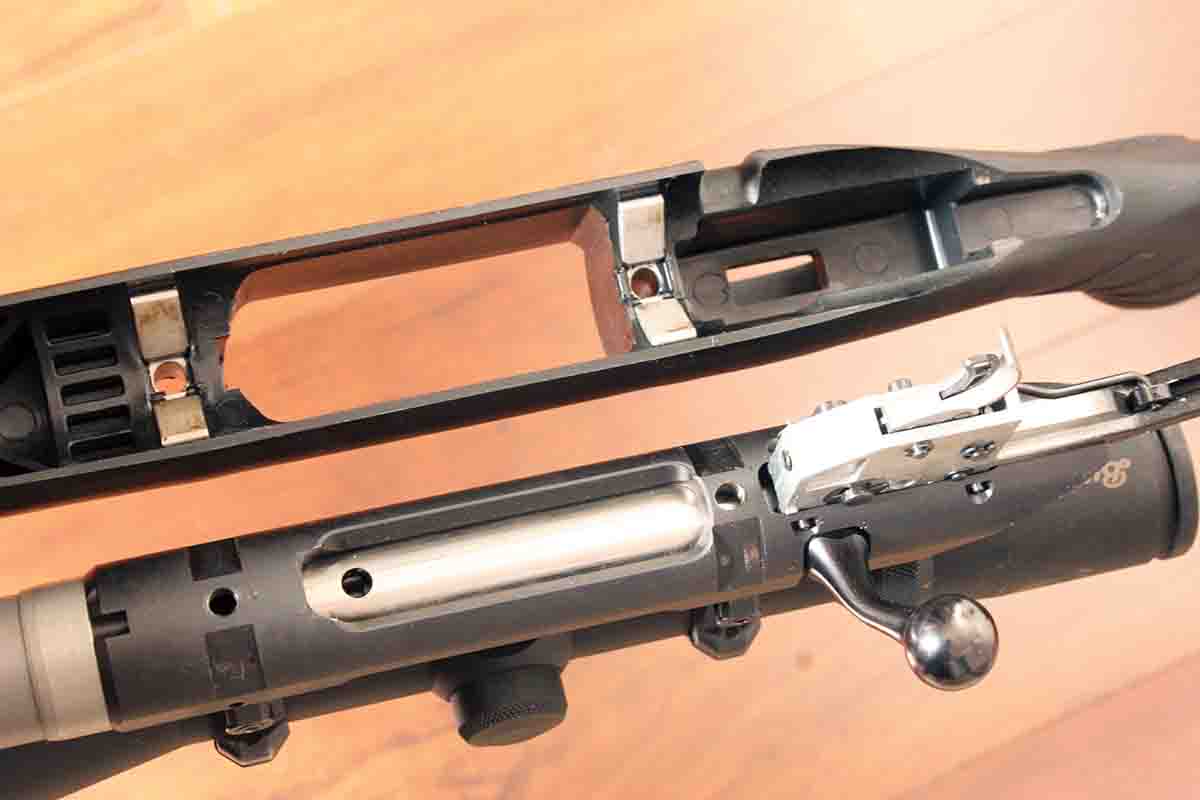
The rancor reached a peak in 1964 when Winchester introduced the push-feed version of its Model 70 with a very free-floated barrel. Traditionalists were ticked off, including Jack O’Connor, who claimed the barrel/forend gap could hide a well-fed rat.
However, several gun writers reported the new version shot very accurately. It would be interesting to know what Colonel Whelen’s reaction would have been, but he had passed away in 1961.
Another factor also resulted in some debate. Epoxy was developed a few years before World War II, and after the war, some shooters started using it for bedding stocks, including amateur gunsmiths who “sporterized” the zillions of war surplus bolt actions that could be purchased cheaply even into the 1960s. Since tight inletting from action tang to forend tip remained highly regarded by some shooters, stocks were often “glass-bedded” the same way.
Glass was short for fiberglass, developed in 1932 when a researcher for an Illinois company accidentally sent a jet of compressed air across molten glass, blowing off tiny fibers. These new-fangled fibers were added to epoxies to provide support for the cured resins, the reason many rifle loonies still talk about “glass bedding,” though today many epoxies use other reinforcing materials, including tiny particles of steel.
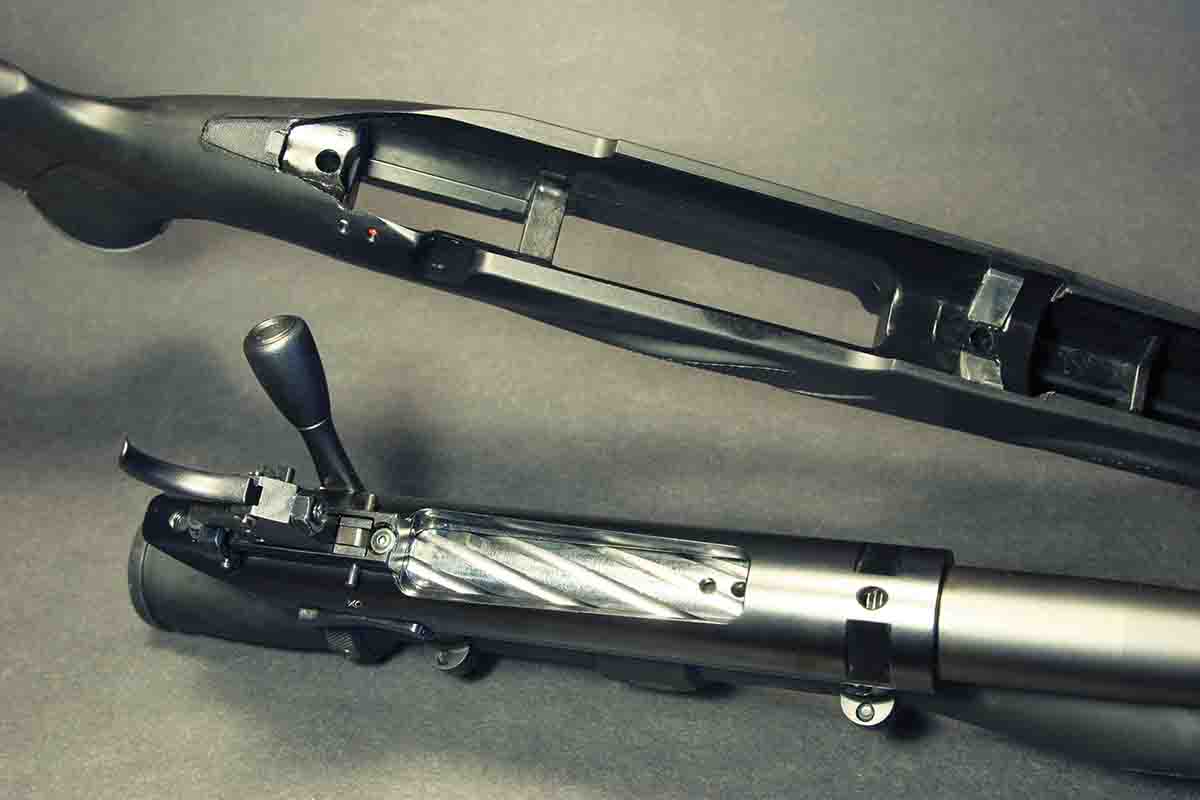
Epoxy offered a quick and easy way to bed bolt-action stocks, though eventually free-floating eliminated the supposed need to bed the entire barreled action. However, many gunsmiths – both professional and amateur, continued to epoxy-bed it all, often with metal tubes called “pillars” surrounding the action screws.
Today, some epoxy-bedders believe the only way to get the most accuracy from a bolt rifle is to fully bed the action with pillars. However, the reason pillars initially appeared was to reinforce stocks that could be crushed by too much screw torque, whether 98 Mauser military rifles stocked in relatively soft wood or early synthetic stocks that were essentially a hollow shell made of fiberglass cloth and epoxy.
Benchrest shooters started using very light pillar-bedded fiberglass in order to lighten their rifles, so heavier barrels could be used and still make competition weight limits. Many shooters reasoned that pillars improved accuracy – but if the stock isn’t compressible, pillars don’t necessarily improve accuracy, whether the material is synthetic or hard wood.
A good example is the most accurate factory rifle I have ever owned, a Remington 700 Varmint model in .223 Remington with a laminated stock. When new, I epoxy-bedded the rear of the recoil lug and completely floated the barrel, and with ammunition loaded using benchrest techniques, the .223 would average five shots in .25 inch at 100 yards – close to competitive benchrest accuracy. Would the rifle have shot more accurately if pillars had been added? I very much doubt it, especially since many of today’s benchrest rifles don’t feature pillars. Instead, their actions are usually epoxied directly into the stock.
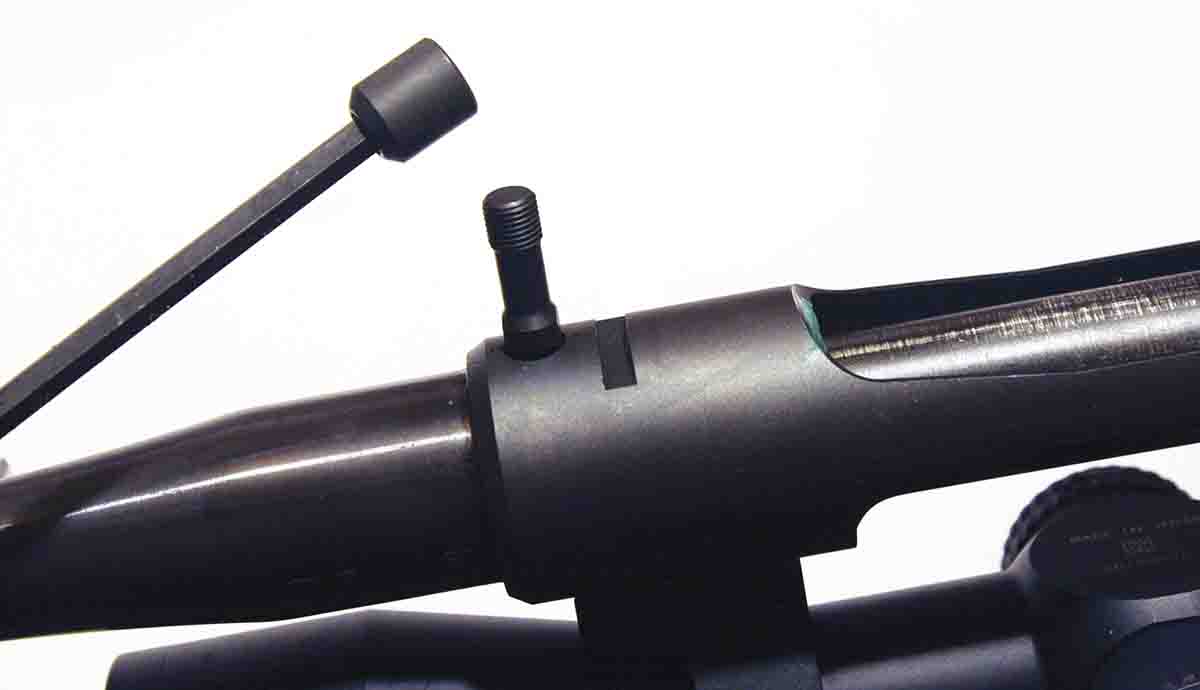
This obsession with full action contact began due to both the early fixation on “fine workmanship” and the flexibility of many early bolt actions – especially 98 Mausers. Many still consider the 98 the epitome of controlled-feed actions, but the action’s not nearly as stiff as newer actions. The military version, with the thumb-slot in the left receiver wall for pushing stripper clips into the magazine can bend pretty easily.
In fact, the Model 98 and similar older actions can flex enough just from tightening the front action screw to affect the contact of the bolt’s locking lugs inside the receiver ring. This can definitely result in mediocre accuracy, and is why “glass bedders” often also bedded the rear inch or two of the barrel, preventing the action from flexing.
However, bedding any part of the barrel became unnecessary in most (but not all) bolt actions long ago, due to a slight change in design, apparently pioneered in the revered pre-’64 Winchester Model 70. The Winchester bolt rifle that preceded the 70, 1925’s Model 54, followed the same action-screw/recoil lug placement as the 98 Mauser and 1903 Springfield, but in the Model 70 the front action screw was moved behind the recoil lug, underneath the bolt lugs.
This prevented bending the front of the action during tightening, eliminating the need to bed the rear of the barrel. Yet, many shooters still do it, despite most modern bolt actions having the front screw behind the recoil lug, and plenty of evidence that it makes no difference, including today’s benchrest rifles.
In fact, many modern bolt actions don’t benefit from bedding anything but the rear of recoil lug, including the round-action Remington 700/721/722s that helped kill off the pre-’64 M70. Some newer bolt actions are even stiffer than Remington 700s, often both the receiver and bolt. Many actions also feature three or more locking lugs to minimize action stresses during firing. As a result, they do not require tight bedding of the entire action, and actually contact the stock very little, much like the epoxy-bedding job on my Remington 700 .223. One example is the Ruger American Rifle, which many shooters love, or love to hate.
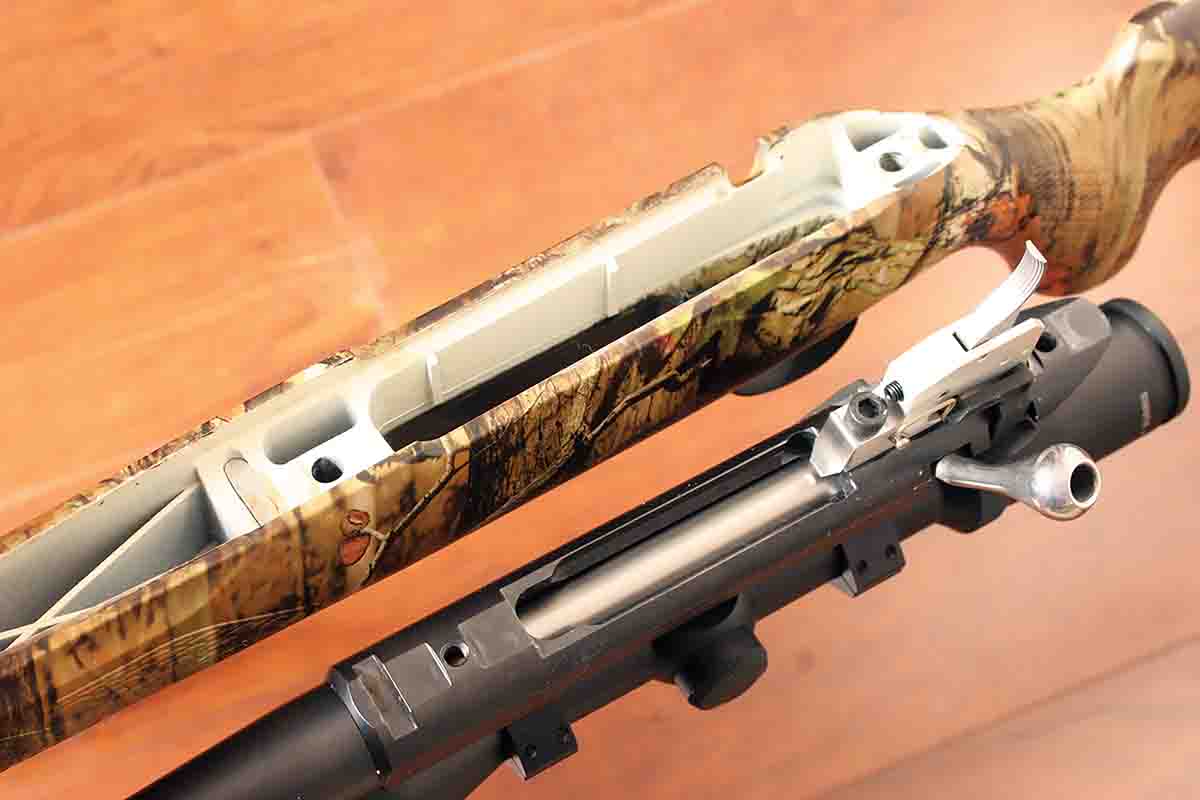
The Ruger’s round action doesn’t even have a recoil lug. Instead, the bottom is milled slightly, fore and aft, to fit into steel V-blocks imbedded in the stock. Combined with a heavy, three-lugged bolt, and the excellent hammer-forged barrels Ruger has made for three decades now, this results in very fine accuracy – at a very low price. (Well, as long as the barrel is actually free-floated in the injection-molded stock. Many of the early stocks were so flexible the barrels could still tap the forend during firing. Later stocks were stiffer.)
In fact, the two most accurate 6.5 Creedmoors I’ve fired were a pair of Ruger American Predators with slightly heavier barrels than the standard model – and I’ve played with eight to 10 Creedmoors, including a couple of semi-custom models costing around 10 times as much as a Ruger American Rifle. In fact, the very first 100-yard group fired with the first Predator, put five shots into .33 inch at 100 yards.
A number of other inexpensive rifles made today also feature bedding systems that resemble the 98 Mauser about as much as humans resemble zebras. Like the Ruger American Rifle, many don’t even have recoil lugs. Another example is the Franchi Momentum, featuring a single steel V-block at the front of the action (which like the Ruger is milled to fit the block) and at the rear an unpillared, solid portion of the injection-molded stock to support the action’s wide tang.
Guess what? Momentums also shoot very well. One I used on a mule deer hunt in New Mexico a few years ago fired a four-shot group of a little over an inch – at 300 yards with factory ammunition. (The chambering was 6.5 Creedmoor, and the ammunition was Hornady Precision Hunter featuring the 143-grain ELD-X bullet.)
In the Tikka T3 action, the recoil “lug” is essentially a very small, square rod mating with a mortise in the underside of the action. Tikkas also have an excellent reputation for accuracy, right out of the box, at an “affordable” price. Of course, part of their accuracy comes from the same hammer-forged barrels used on Sakos produced at the factory that makes both brands of rifle in Riihimäki, Finland.
Other actions don’t even have a conventional front action screw. The Mauser Model 18 has a threaded stud permanently fitted to the front of the action, attached to the stock with a typical hexagonal nut.
I suspect doing away with a traditional, relatively large recoil lug enhances accuracy. In his book RIFLE ACCURACY FACTS, (2000) Author Harold R. Vaughn (a professional rocket scientist and an amateur rifle loony) traced one of the factors in “inaccuracy” to the conventional recoil lug on the Remington 721 .270 Winchester he used in his extensive tests. He determined the relatively long lug actually caused the front of the action to flex slightly during firing, which flipped the barrel up and down slightly, then devised a method to mitigate it.
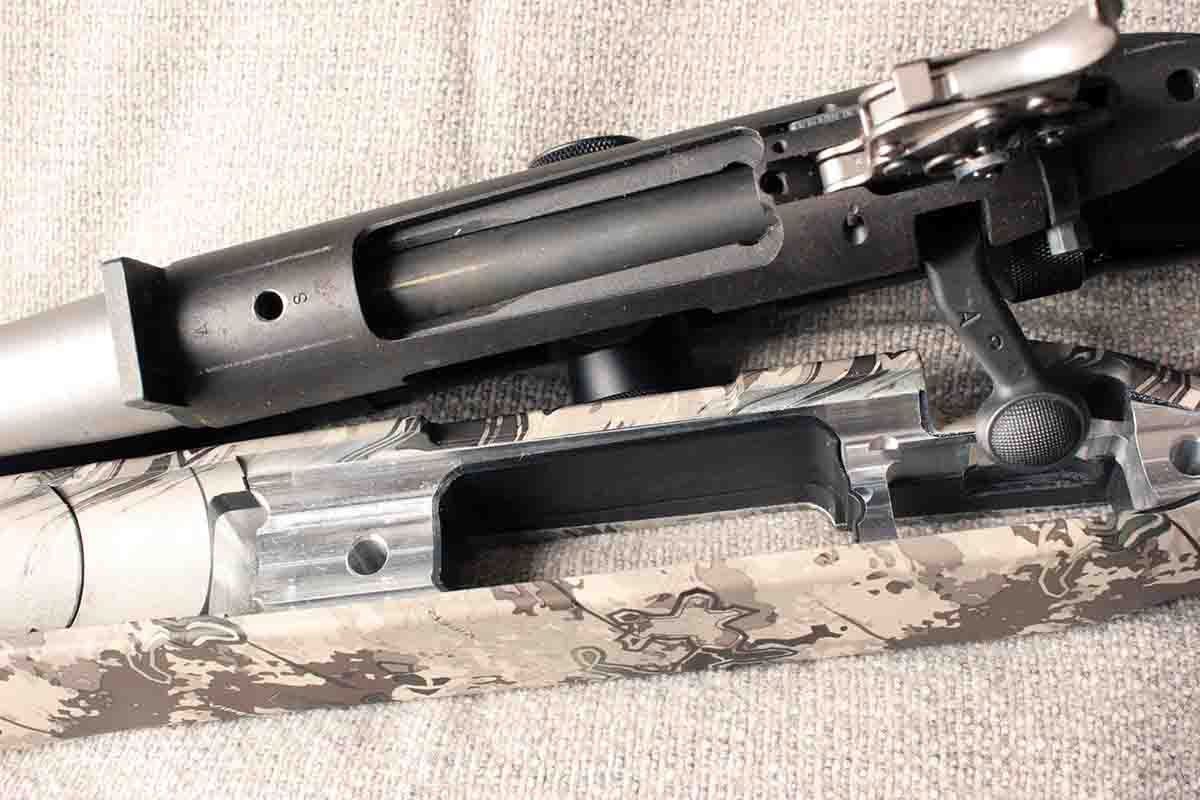
Of course, many older shooters still resent these changes in “classic” bolt-action design – in large part because the changes reduce manufacturing costs, allowing “cheap” rifles to shoot very well. This also angered traditionalists in the years just after World War II, when Remington used engineering and manufacturing simplifications developed during the war when designing the Remington 721 and 722, which retailed for less than 75 percent of the price of a new Winchester Model 70. Yet the “cheap” Remington rifles often shot more accurately than the classically designed and manufactured Model 70s.
This is also why the 721/722 and the Remington 700 (a fancier version of the 721/722) became perhaps the most abundant commercial bolt-action rifles ever made, one reason Remington actions (and many “700 clone” actions, like the Bergara’s) are probably used as the basis for more custom rifles than any other action.
This is also why so many companies manufacture aftermarket parts to fit Remington actions, including magazines, triggers and even bolts, and why so many new non-700 actions are contoured to accept 721/722/700 scope bases.
All of this more recently resulted in aftermarket, drop-in stocks to fit Remington 700 actions with minimal contact, even when they feature a bedding block. Stocky’s Stocks offers what it calls the Accublock, which essentially features slim “rails” at the front and rear, minimizing contact.
A couple years ago, I dropped the barreled action of a Remington 700 .204 Ruger into a Stocky’s Long Range Composite Accublock stock. The rifle already shot very well with a walnut CDL stock with the recoil lug epoxy-bedded, but its groups tightened in the Accublock stock.
I suspect some “glass-bedding” fans assumed they could improve Accublock stocks – or many of today’s recoil-lug-free factory rifle stocks – with some “glassing.” No doubt some will try, but I also doubt there will be any improvement in accuracy. Minimal but firm action-stock contact works very well.


